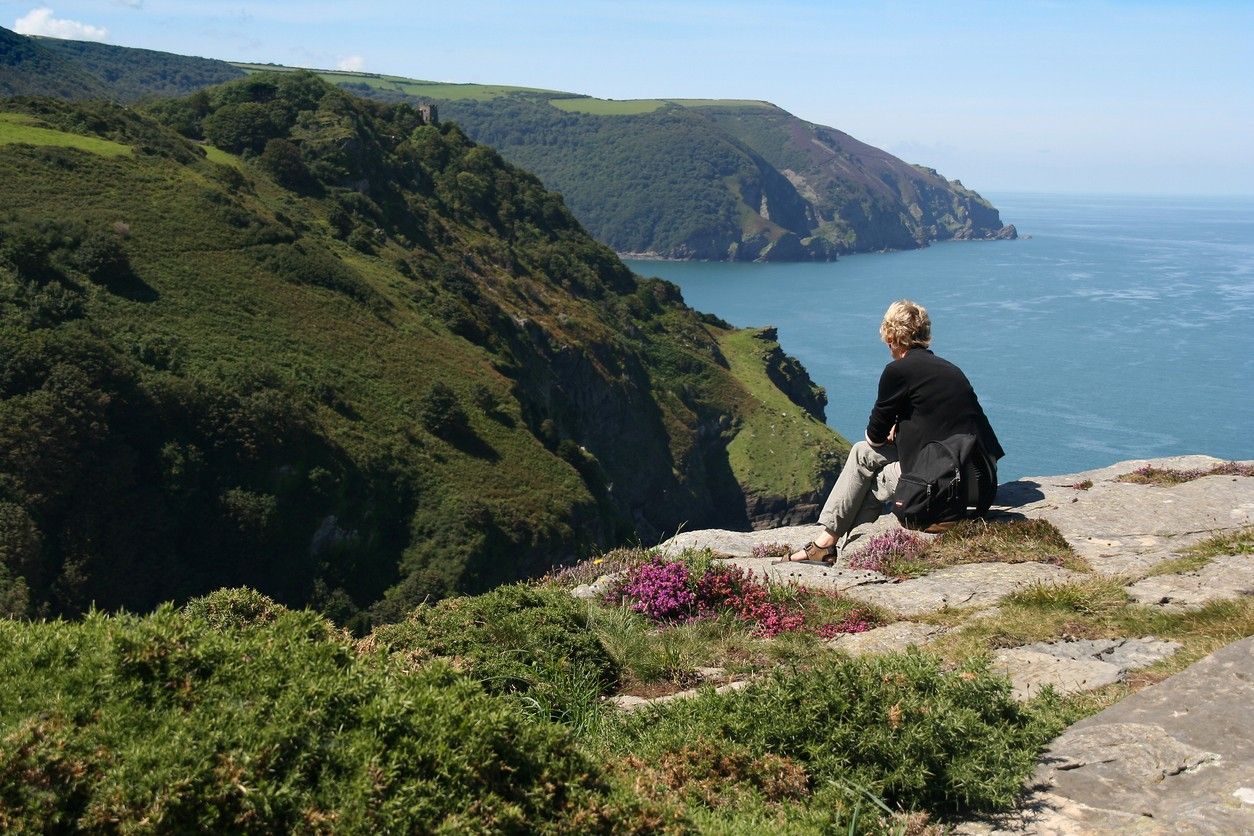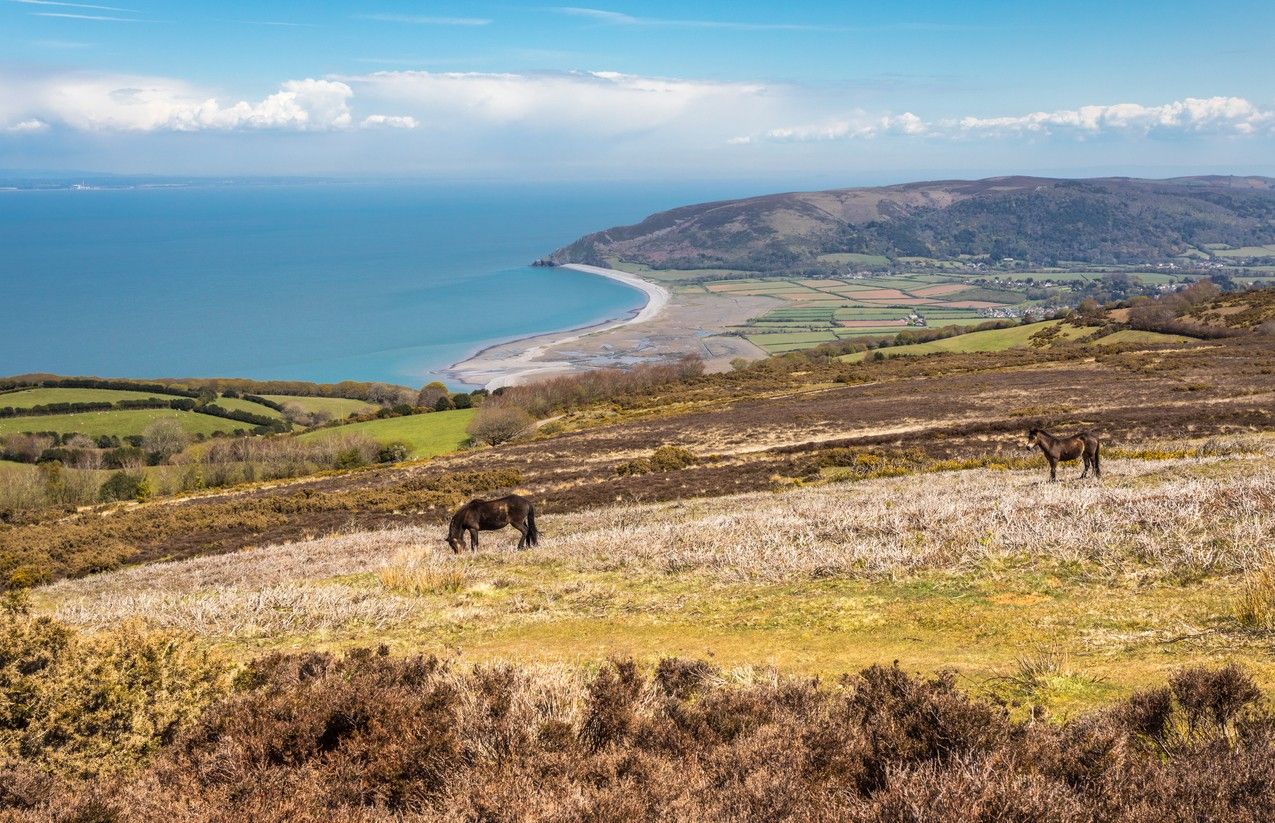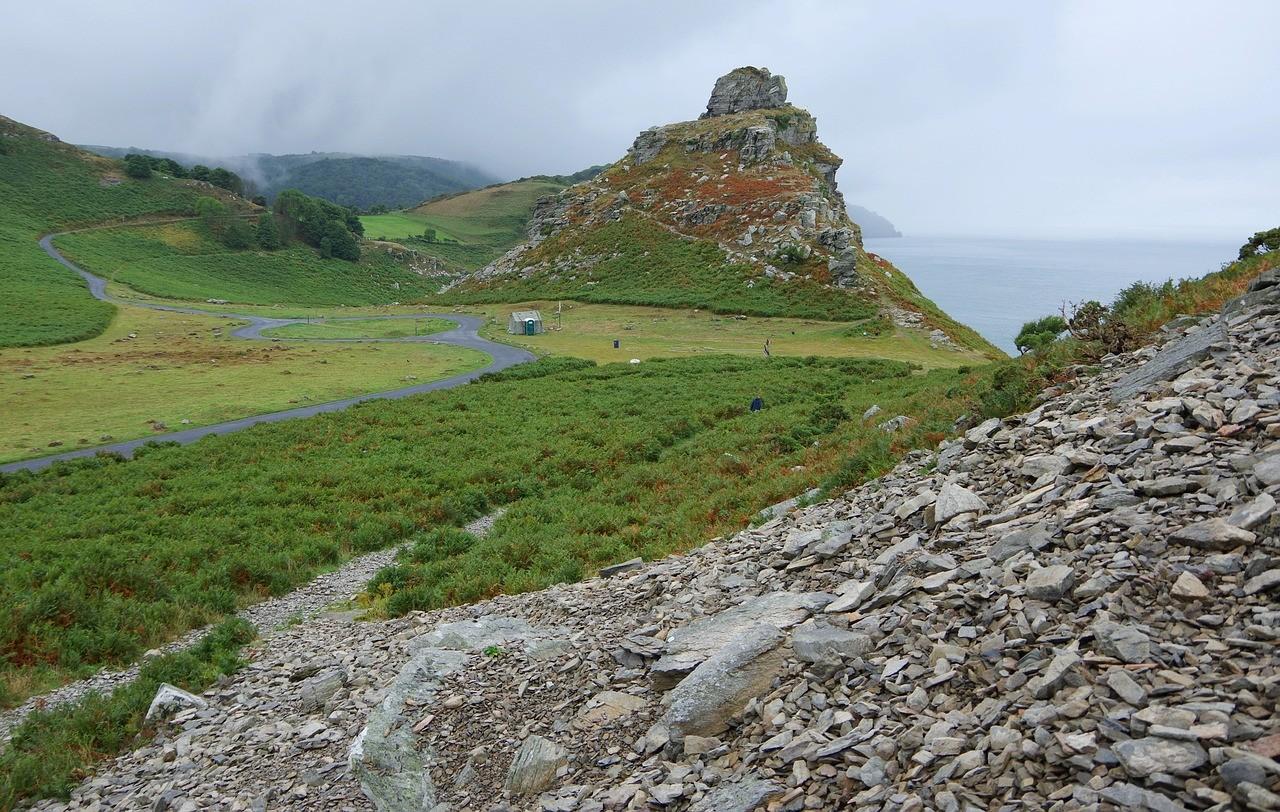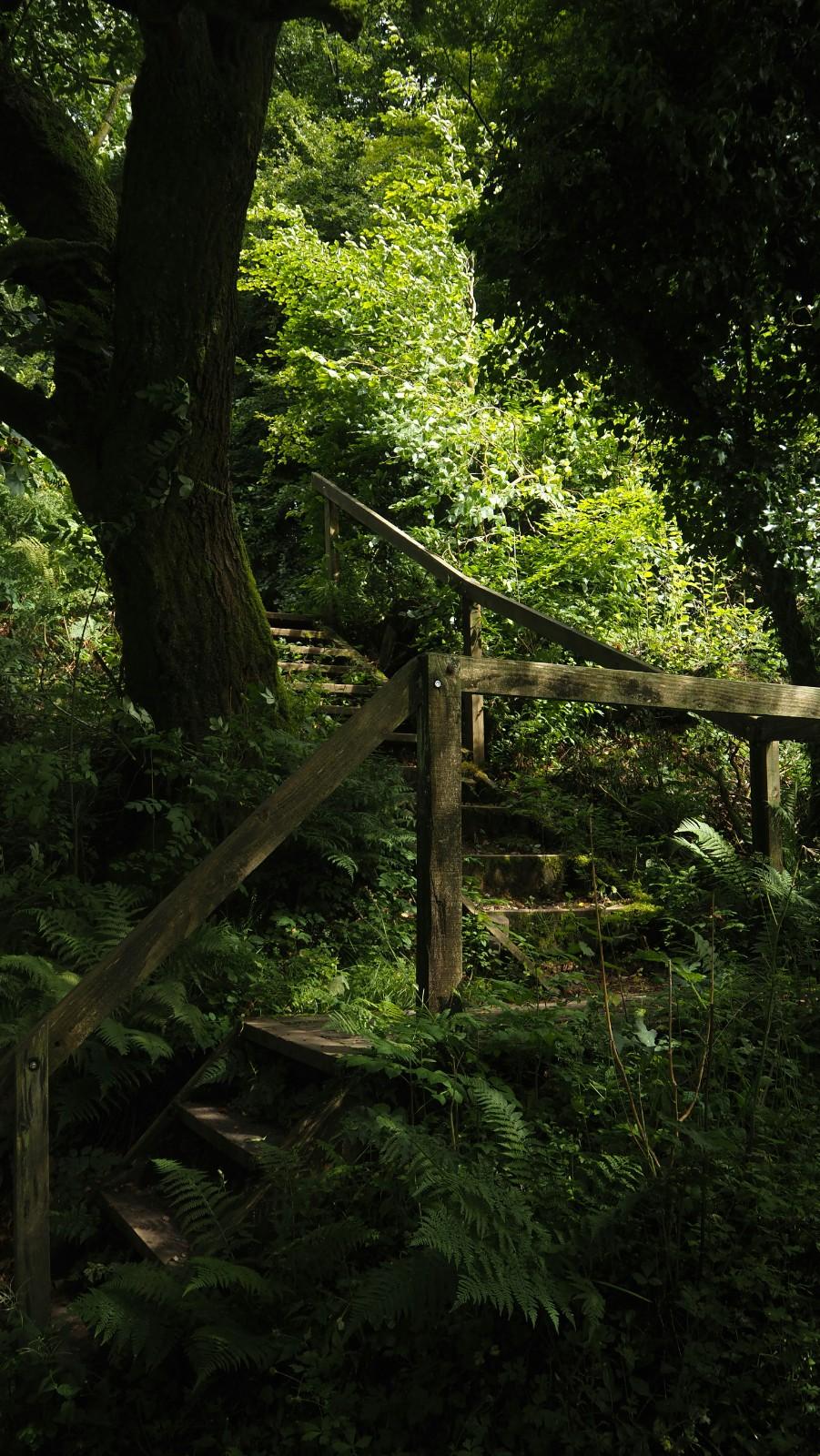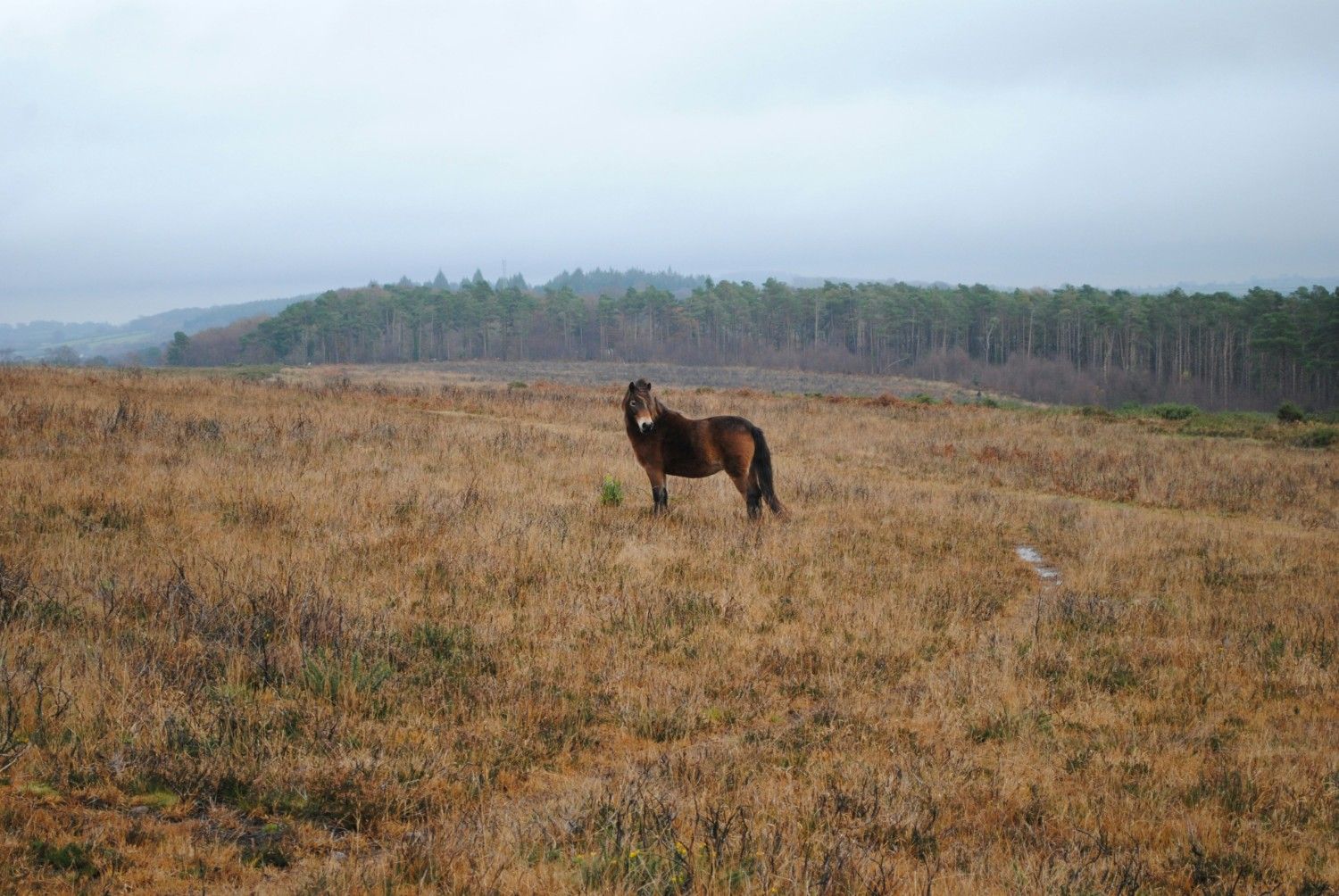Introduction to Exmoor National Park
Exmoor National Park is a captivating place full of striking moorland, enchanting woodlands, tumbling rivers, and picturesque villages. Designated as a National Park in 1954, it covers an area of 692 square kilometres in Northern Devon and Somerset.
Exmoor National Park is situated in southwest England, spanning inland from the Bristol Channel coast across parts of Devon and Somerset. With a total area of 692 square kilometres, it is one of the smallest National Parks in Britain. However, its compact size belies the incredible diversity of landscapes found within its boundaries.
Landscapes and Geography
The geology and landforms of Exmoor National Park give rise to a variety of captivating landscapes. The highest points are located in the north around Dunkery Beacon, where the terrain reaches elevations of over 500 metres. This high moorland features expansive heather moorland and grassland dotted with gorse and bracken. Dramatic river valleys cut through the central moorland, lined by patches of woodland. Further south, the moorland transitions into a pastoral landscape of rolling farmland and villages. The terrain descends to the coastal edges, where impressive cliffs overlook sandy beaches and secluded coves.
National Park Designation
Exmoor was designated as a National Park in 1954 under the National Parks and Access to the Countryside Act of 1949. It became the thirteenth National Park in Britain. The purpose of National Park status is to conserve and enhance the natural beauty, wildlife, and cultural heritage of the area whilst promoting public understanding and enjoyment through recreation. As such, Exmoor National Park possesses important ecological, geological, archaeological, historic, and landscape value for the nation. Its designation helps to protect those assets for the future.
Places to Stay in Exmoor National Park
This section will provide an overview of accommodation options in Exmoor National Park, from hotels and B&Bs to campsites and holiday cottages.
When visiting Exmoor National Park, an exciting range of places to stay awaits to suit all budgets and preferences. Visitors can choose from charming hotels, traditional inns, cozy B&Bs, self-catering cottages, caravan/camping sites, and more. Accommodation ranges from remote, rustic hideaways to luxurious country manors.
Hotels
Exmoor National Park boasts several hotels situated in stunning surroundings, from medieval village inns to elegant Victorian lodges. Notable options include the Exmoor White Horse Inn located near the coast in the quaint hamlet of Exford, and Lucknam Park, an ornate luxury country house hotel near Dulverton. Visitors seeking a hotel stay can relish in warm hospitality, first-class dining, and well-appointed rooms often decorated in traditional country style.
B&Bs and Guesthouses
For more affordable and intimate accommodation, various enticing B&Bs and guesthouses exist across Exmoor National Park in places like Dulverton, Dunster, and Porlock. These family-run establishments offer comfortable rooms and a delicious home-cooked breakfast to fuel days spent exploring. Perks often include free parking, wi-fi access, and local guidance from friendly resident hosts.
Holiday Cottages
Holiday cottages also prove extremely popular for self-catering holidays in Exmoor National Park. From lone converted farm cottages to cottages part of larger holiday villages, visitors can bask in the home comforts and privacy these self-contained rentals afford. Many feature wood-burning stoves, private gardens, and stunning vistas across some of Britain's most beguiling landscapes.
Camping and Caravanning
For accommodation immersed in the great outdoors, numerous campsites and caravan parks exist in prime locations across Exmoor National Park. These range from simple tent pitching sites to glamping options with yurts and shepherd’s huts. Caravan and motorhome owners also have superb parks to choose from, some located along the coast. On-site facilities often include electric/water hook ups, shops, playgrounds, and clean modern amenities.
Climate and Weather in Exmoor National Park
When planning your visit to Exmoor National Park, it helps to understand the area's climate patterns and weather conditions during different seasons. This section summarises the typical weather and temperatures you can expect.
Overall, Exmoor National Park possesses a temperate oceanic climate, resulting in generally mild weather year-round. However, given parts of the moor rise above 500 metres, temperatures tend to fall slightly below the nearby lowlands. The area also receives higher than average rainfall thanks to drifting precipitation from the Atlantic.
Temperatures
During summer, average highs reach around 19°C, with lengthy sunny spells common. In winter months, daytime temperatures typically range from 7-10°C, while overnight frost and sub-zero temperatures frequently occur. Due to the altitude, snow falls across higher ground a few days annually, attracting sledgers when conditions allow. Coastal areas benefit from marginally warmer temperatures than inland areas.
Rainfall
Given its proximity to the Atlantic Ocean, Exmoor National Park witnesses high annual rainfall, averaging over 1,200mm each year. Autumn tends to be the wettest season, while spring usually remains driest. However, rainfall patterns always vary substantially year on year. Heavy showers and drizzle can occur at short notice throughout all seasons.
Wind
The open moorland also leaves the area quite exposed, resulting in frequent windy days. Coastal areas bear the brunt from south-westerly winds blowing inland off the sea. However, wind speeds typically remain moderate, with strong gales only occurring a handful of times annually during autumn and winter.
Walking Trails and Footpaths in Exmoor National Park
As one of Britain’s premier walking destinations, Exmoor National Park features an extensive network of superb walking trails and footpaths just waiting to be explored on foot.
With over 970 kilometres of public rights of way criss-crossing landscapes as diverse as windswept moorland, sheltered river valleys, and spectacular coastal cliffs, walkers enjoy immersive access to soul-stirring vistas and nature at every turn. Footpaths cater to all abilities too, ranging from family-friendly romps under a mile to multi-day moorland treks covering over 20 miles.
Long-distance Footpaths
Keen hikers flock to challenge themselves on Exmoor’s long-distance footpaths which often track across the most stunning and remote terrain. Two flagship trails are the 34-mile Exmoor Perambulation showcasing the heart of the moor, and the dramatic South West Coast Path which spans the park’s entire coastline. Other fine options include the Coleridge Way and Macmillan Way West.
Circular Walks
For less committed walkers, countless shorter circular walks of a few miles exist. These well-marked routes offer the perfect introduction to Exmoor’s landscapes. Notable trails encircle spectacular landmarks like Dunkery Beacon, while riverside walks near Lynton and Porlock provide low-level ambles along the water’s edge through nature-rich woodlands.
Walk Difficulty
When selecting an Exmoor walk, judging difficulty levels is key. Signposted routes indicate easy, moderate and hard gradings. Generally, high moorland, uneven terrain underfoot and lengthier distances signify greatest challenge. Remember conditions also vary hugely between seasons. Navigational skills and appropriate gear are essential for tackling remote, multi-day walks.
Maps and Guide to Exploring Exmoor National Park
To help both first-time visitors and seasoned regulars make the most of exploring Exmoor National Park, various maps and guide resources prove invaluable. This section outlines some recommended products.
Accurately plotting your position across Exmoor's sprawling landscape is crucial, especially when venturing away from waymarked footpaths onto more remote terrain. Waterproof Ordnance Survey maps at scales of either 1:25,000 or 1:50,000 provide unrivalled detail, showing all landmarks, routes, and elevation. Customisable Harvey Maps also cover the National Park and remain popular.
For visitor guidance, the pocket-sized Collins Rambler’s Guides on Exmoor detail abundance of recommended walking routes, sites, and attractions to discover, complete with colour photos and route maps. Those planning serious hiking expeditions should consider the official National Trail Guide devoted solely to the iconic South West Coast Path crossing Exmoor’s shoreline.
Alternatively, for on-the-go navigation and information, several useful smartphone apps now assist walkers and sightseers alike. Options include ViewRanger, OS Maps, and Britain’s Best Walks apps which allow users to track their real-time position whilst learning about surrounding features using augmented reality technology as they journey.
Whichever products prove most practical, getting to grips with Exmoor National Park's layout using maps and guides ensures your explorations proceed more smoothly and you can readily pinpoint where you are when needed.
Wildlife and Nature in Exmoor National Park
Owing to the diversity of habitats present, Exmoor National Park harbours an abundance of wildlife and offers nature enthusiasts captivating glimpses of native flora and fauna. From mighty stags roaming the moor to peregrine falcons soaring the coastal cliffs, discovering the National Park’s animal inhabitants never fails to delight.
The expansive heather moorland represents vital terrain for numerous rare bird species. Keen birdwatchers can hope to spot skylarks, snipe, and intriguing birds of prey like merlin and hen harrier on the wing. The heaths and grasslands also provide sanctuary for Exmoor’s free-roaming ponies - icons of the landscape for centuries.
Heading down wooded valleys brings chances to marvel at red deer and elusive red squirrels inhabiting the oak woodlands. The rivers themselves offer rich habitats too. Wild salmon and trout thrive in the clean waters, while dippers and kingfishers dash along the banks. Exploring the shore reveals striking coastal flowers and seaweeds, not to mention captivating marine creatures revealed at low tide.
Thanks to conservation efforts, intriguing species extinguished elsewhere in the UK still cling on across Exmoor National Park, like the vibrant heath fritillary butterfly. Strict protection ensures vital habitats stay intact so future generations can continue enjoying its precious plants and wildlife.
Visitor Attractions and Activities in Exmoor National Park
Beyond hiking its magnificent landscapes, Exmoor National Park offers an array of visitor attractions and activities to discover during your stay. Families, foodies, culture vultures and outdoor adventurers will all find plenty to occupy them.
Several visitor centres and museums are perfect for learning about Exmoor’s human and natural heritage on wet weather days. Top options include the National Park Centre showcasing informative displays in Dunster, and the Exmoor Wildlife Museum packed with curious exhibits focused on local animals.
For families, attractions like the Tarr Steps stone clapper bridge, medieval Dunster Castle and Exmoor Pony Centre promise interactive escapades for kids, while villages like Porlock and Dulverton hide a trove of traditional tearooms serving delicious home-baked treats.
Adrenaline junkies can also get their fix courtesy of thrilling activities available locally. Rock climbing, abseiling, kayaking and mountain biking adventures all take place across stirring landscapes with qualified instruction. Off-road driving, archery, rifle shooting and even coasteering await those seeking outdoor challenges!
Local Events and Festivals
Throughout the year, Exmoor National Park hosts engaging cultural events and vibrant community festivals too like the Dunster by Candlelight procession and Porlock Weir Carnival. Visitors timing trips right can immerse themselves in celebrations of local food, music and history at these quintessentially Westcountry gatherings.
Getting To and Around Exmoor National Park
Lastly, when preparing your journey to Exmoor National Park, understanding transport options for getting there and exploring once you arrive is key. This section summarises the main public transport links and driving routes serving the National Park, plus insight on getting around internally.
Reaching Exmoor
Although rural, Exmoor National Park enjoys good connections with several key transport links existing. By road, access from the M5, A39 and A361 is most straightforward. Key village gateways are Dulverton, Dunster, Lynton and Porlock. For those reliant on public transport, bus routes connect Exmoor to Taunton, Barnstaple and Minehead with onward rail links. Once within the park, explore via tour buses, car, bike or using 400 miles of public footpaths.
Travelling Around
Owing to its mostly rural nature and infrastructure, truly experiencing all of Exmoor does require independent transportation in the form of a private car or motorcycle. The winding country roads threading through enchanting villages and over the moors lend perfectly to carefree road trips. Just beware the narrow lanes demand attentive driving. Alternatively, several designated cycle routes now exist, while seasonal bus services connect key settlements and trailheads. Local tours, boat rides, and steam trains also transport visitors effortlessly around the National Park’s most famous landmarks and coastal panoramas.
Related Articles

Let us know you agree to cookies
We use marketing, analytical and functional cookies as well as similar technologies to give you the best experience. Third parties, including social media platforms, often place tracking cookies on our site to show you personalised adverts outside of our website.
We store your cookie preferences for two years and you can edit your preferences via ‘manage cookies’ or through the cookie policy at the bottom of every page. For more information, please see our cookie policy.


